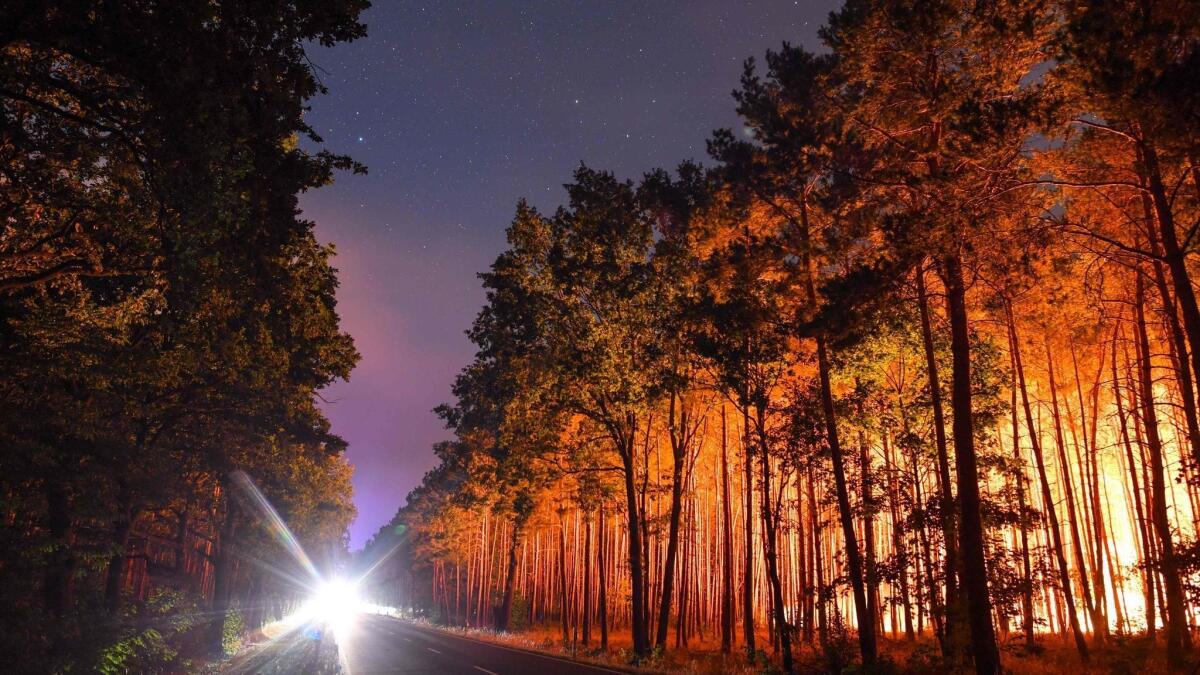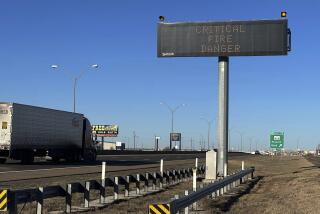Exploding World War II ammo slows firefighters as forests outside Berlin burn

Wildfires burning south of Berlin have forced the evacuation of three villages as the flames continue to detonate grenades and other rusting munitions left behind from World War II, slowing efforts by firefighters to get an upper hand on the fast-moving blazes that have pushed smoke and ash all the way to the country’s border with Poland.
The fires broke out in the midst of a record-breaking dry summer and quickly spread across an area the size of about 500 soccer fields in the normally leafy green forests about 30 miles southwest of Berlin.
Seriously complicating efforts to knock down the blazes are the exploding ordnances left over from the fierce fighting between the Soviet Red Army and the German Wehrmacht during the closing weeks of World War II. There have been other major fires across Europe this summer, but none with such perils as the relics of Germany’s past. Fires in nearby Fichtenwalde last month also caused similar challenges for firefighters because of the leftover munitions.
“It’s unfortunately impossible to say right now how long it will take to get this under control,” Brandenburg State Gov. Dietmar Woidke said Friday after touring the perimeter of the forest fires, which chewed through the area’s towering pine trees.
“It could take a couple of days. We’ve got to stay realistic about the dangers,” he said. “A lot will depend on the weather. We’re going to do everything we can to protect property, but we’re primarily working to protect people from danger.”
He said favorable winds and long-hoped-for rain could help firefighters get an upper hand on the blazes.

More than 500 people were evacuated from homes in the idyllic and sparsely populated rural region near Berlin as more than 550 firefighters battled to prevent the fires from moving deeper in the forests, according to the Brandenburg state interior ministry. German army soldiers stationed in the state have been called in to help firefighters and police.
Ash and smoke from the fires has drifted as far away as Frankfurt on the Oder River, some 70 miles to the northeast on the German-Polish border. Berlin police advised residents of the German capital to keep their windows closed because of the smoke and soot.
“What’s making everything so especially difficult for the firefighters is that there are still ordnances from the war in the forest soil and the fire has been setting off the munitions,” said Christian Stein, a local official from the Potsdam-Mittelmark district council. “That’s why the firefighters aren’t going into the forest at all.”
Instead, firefighters have been forced to fight the blazes from roads and forest ranger routes that crisscross the forests as well as relying on aerial support from two helicopters, he added.
“Our main goal right now is to protect the buildings in the three villages we’ve evacuated,” Stein added, referring to Frohnsdorf, Klausdorf and Tiefenbrunnen.
Train lines and roads between Berlin and towns in the area southwest of Berlin were closed Friday.
Police are investigating whether the fires were started by an arsonist because they broke out nearly simultaneously in three locations, according to a report in the Maerkische Allgemeine Zeitung newspaper on Friday. Between April and early August there were 22 fires that broke out in the region — including at least 10 that were suspected arson attacks.
Some of the heaviest fighting in World War II took place in the forests outside Berlin, starting with the battle at the Seelow Heights on April 16, 1945. More than 2.5 million Soviets launched their attack on and around Berlin with some 6,000 tanks and 7,000 warplanes. The area was left littered with ammunition, grenades and other explosives.
Some of the munitions and ordnance in the area could also have been left behind by Soviet troops who occupied and engaged in “war games” with training exercises in the forests around Berlin during the Cold War.
“The forests around Berlin are filled with munitions, grenades and unexploded debris left behind from World War II,” said Hajo Funke, a professor at Berlin’s Free University and an expert on the Nazi era. “There are far too many to clear away. Everyone knows they are out there and that they’re dangerous. We’re just used to munitions discoveries like that. It’s just part of life.”
Kirschbaum is a special correspondent.
UPDATES:
11:10 a.m.: This article was updated with Los Angeles Times staff reporting.
This article was originally published at 3:25 a.m.
More to Read
Start your day right
Sign up for Essential California for news, features and recommendations from the L.A. Times and beyond in your inbox six days a week.
You may occasionally receive promotional content from the Los Angeles Times.






